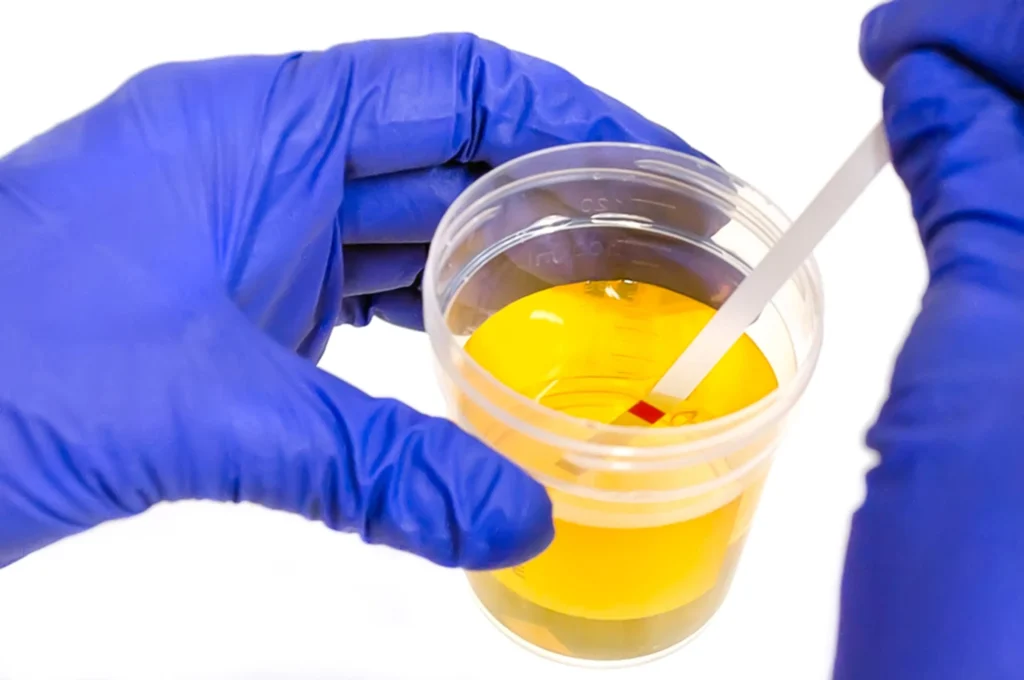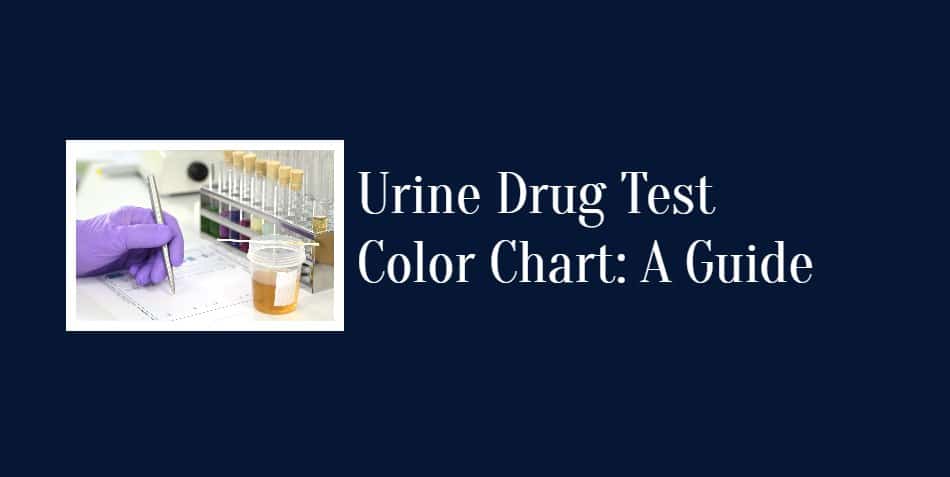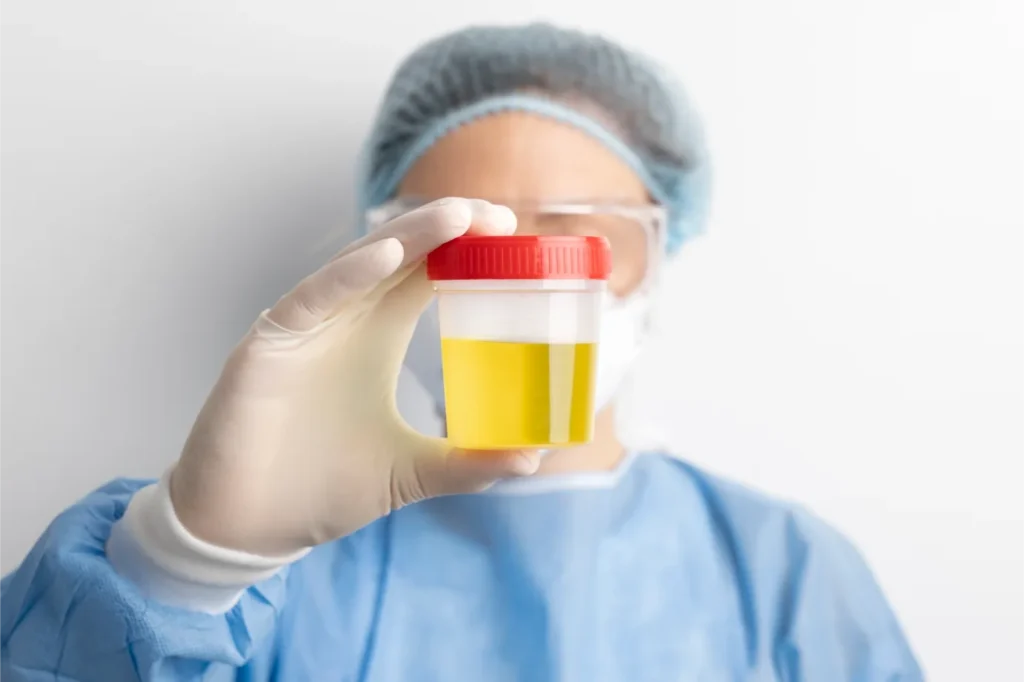Whether you’re new to drug testing or this is the first time you’re incorporating urine tests into your process, reading the results can be difficult and does a urine color in a drug test matter. Urine drug tests can come with a range of abilities, testing anywhere from one to several different drugs, each one using its own stick. If that’s not complicated enough, different tests can also have unique ways to read the results.
To quickly get started with incorporating urine drug tests into your testing process, it helps to have a solid understanding of how these tests work and how to read them. A great way to quickly learn is to use a urine drug test color chart for reference.
In order to support testers and their efforts, we’ve created a brief guide with a drug urine test color chart complete with explanations on what drug test colors mean. We’ll also talk about C and T on drug tests so you can achieve accurate results.

How to Read a Drug Test
Reading and understanding drug test results can be difficult at first. Once you understand how the test works and start memorizing the colors, you’ll become an expert.
The first most important aspect of reading drug tests is to understand what C and T mean on a drug test strip. No matter what colors and results you get on a drug test, the results will be invalid if C and T are not read properly.
In short, “C” stands for “control.” As with all experiments and tests, having a control result is crucial for comparing against the test. A control must always be the same so that the test result can be compared to it accurately.
The letter “T” represents the test result. Drug test strips will have a “C” and “T” section on them. If the “C” result is valid, then the “T” section in the urine drug test results can be read accurately.
For a drug test to be valid, the control section must always have a line present once you conduct the test. If a line appears in the test section but not the control section, the test is not valid.
Buy Urine Drug Test Strips at the Lowest Prices, Guaranteed
What Causes the T Line to Appear?
Drug tests have set cutoff levels for substances that determine whether the test is positive or negative. The Substance Abuse and Mental Health Services Administration (SAMSHA) recommends certain cutoff levels for specific drugs to reduce the number of false positives or positive tests for trace amounts.
Drug testers such as law enforcement have zero-tolerance policies. These agencies typically use tests with much lower cutoff levels in order to test for drug use at any level.
Overall, the subject must have a certain level of drug present in their sample in order to trip the T line. As a result, drug test producers have recommendations for the time period in which you should administer these tests after suspected drug use for best results.
What Does a Negative Drug Test Look Like?
Negative drug screen results happen in two situations. If a drug test has no control line, then you must consider it negative. If it has a control line and a test line, then the drug test is negative.
What Does a Positive Drug Test Look Like?
A drug test is positive when the control line appears, but the test line does not appear. The test line does not appear when the concentration of the drug in the urine is higher than the cutoff level for that test.
Urine color in a drug test:
The second most important part of reading drug test results is to know which colors mean which substances are present or Urine color in a drug test. When you are testing for a wide range of substances, it can be difficult to keep these color codes straight, slowing down your drug screening process.
Drug test colors are not the same across all manufacturers. Some drug tests use very different colors, while others are a bit harder to read.
The best course of action is to use the instructions from the drug testing kit you’ve purchased and follow the color code provided. Thankfully, drug test strip colors are usually also labeled with the name of the substance on the package.
Color Code for Sample Validity
Ovus Medical also provide adulteration strips, which confirm the validity of the urine sample. These strips ensure that the test subject provides a fresh sample of their own urine for the test.
These adulteration strips check for creatinine, nitrite, glutaraldehyde, specific gravity, and oxidants. Abnormal levels of these factors can cause inaccurate test results.
So, what does the color blue mean on a drug test? Oxidants will result in a color range from white to dark blue. The darker the blue, the higher the level of oxidants in the sample.
Specific gravity results will range from dark green to a mustard yellow. If the result is on one of those extreme ends, it is abnormal. A normal result will be somewhere in the middle of greenish yellow.
Checking the pH is important, too, and results can range from dark brown to light pinks and oranges. The best result is a beigey orange color, not pink or dark brown.
For nitrite, an abnormal result is red. The normal result is white or light pink. For glutaraldehyde, a negative result is a deep pinkish purple, while an abnormal result is dark purple or light purple.
Finally, creatinine should result in a dark to medium brown, not a light tan color.
Buy Urine Drug Test Cups at the Lowest Prices, Guaranteed
Why Are the Control and Test Lines Different Colors?
When you ask a subject to take a urine drug test, the control and test lines might appear as different colors. The control line might be a solid red while the test line is a faded pink. It’s important to remember that any line that shows up in the test section, regardless of color, indicates a negative test.
So why is the test line pink and the control line red? Faded test lines can either be the result of an inaccurately used test or environmental factors. Factors that can affect the line color are:
- Urine dilution
- The sample sitting too long before testing or reading results
- Insufficient sample
- Humidity or temperature of the room
- Age of the test
There are some legal, prescription drugs that can cause cross-reactivity as well. Positive drug tests must always undergo secondary testing at a lab to confirm the results. You can cross-check the substance showing up positive against a chart of reactive drugs that could cause a positive test.
In some cases, it’s true that having only a trace amount of a substance can trigger the test line to only fade slightly. You might be suspicious that the test subject has used, but they don’t have enough in their system to trigger the cutoff. You are not allowed, however, to consider this a positive test result.
Accurate Urine Drug Testing
With your handy urine drug test color chart and knowledge of how to read a test correctly, you’ll be able to quickly cross reference drug test results with the assigned substances. As a result, your drug testing process will go smoothly and quickly.
Ovus Medical offers top-notch drug tests of all kinds to drug testing professionals. All products are CLIA Waived, FDA approved, and easy to use. Buy in bulk. You can even ask for sample cups!
Contact us today to get started on your bulk order.
More Products We Offer:


